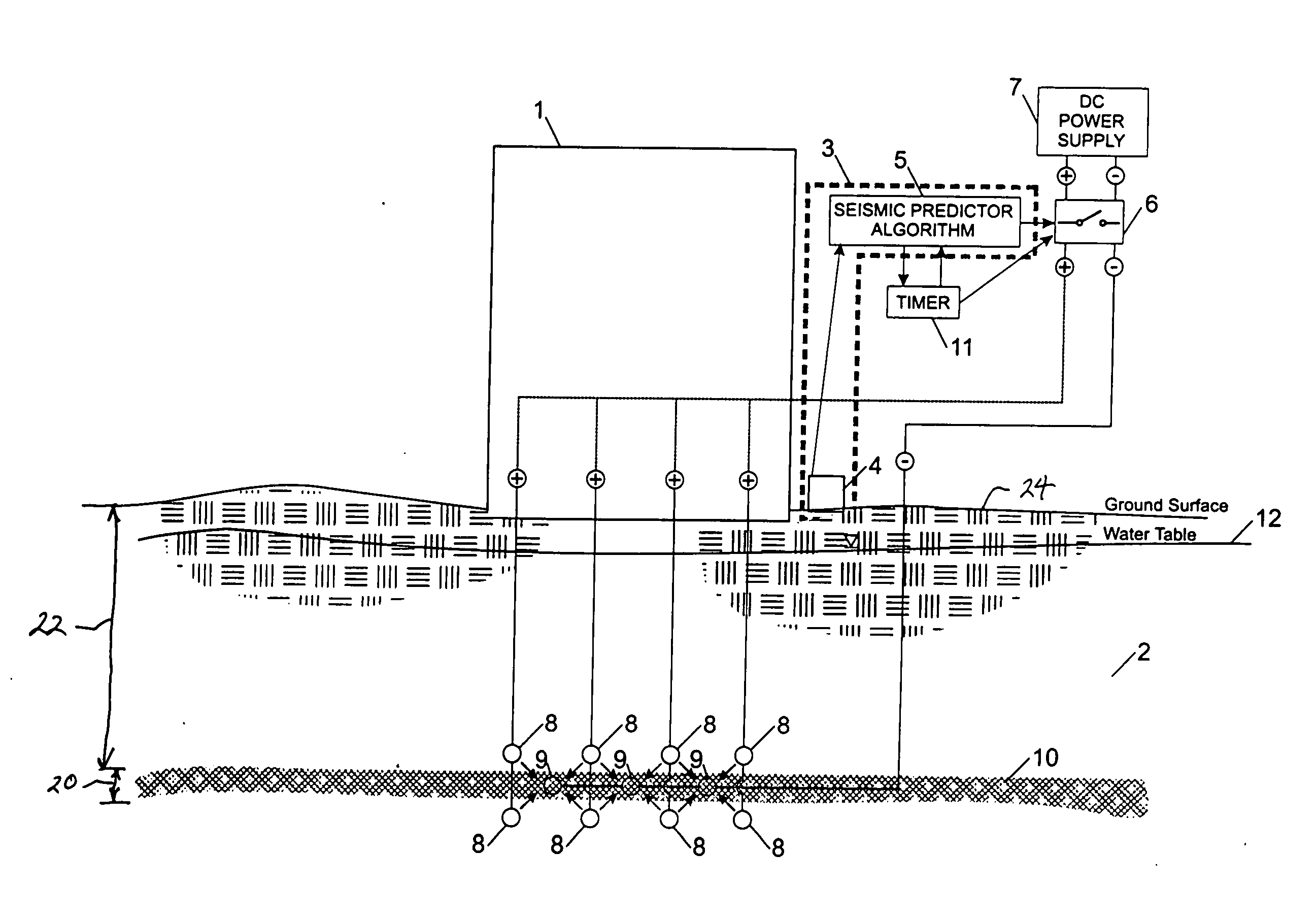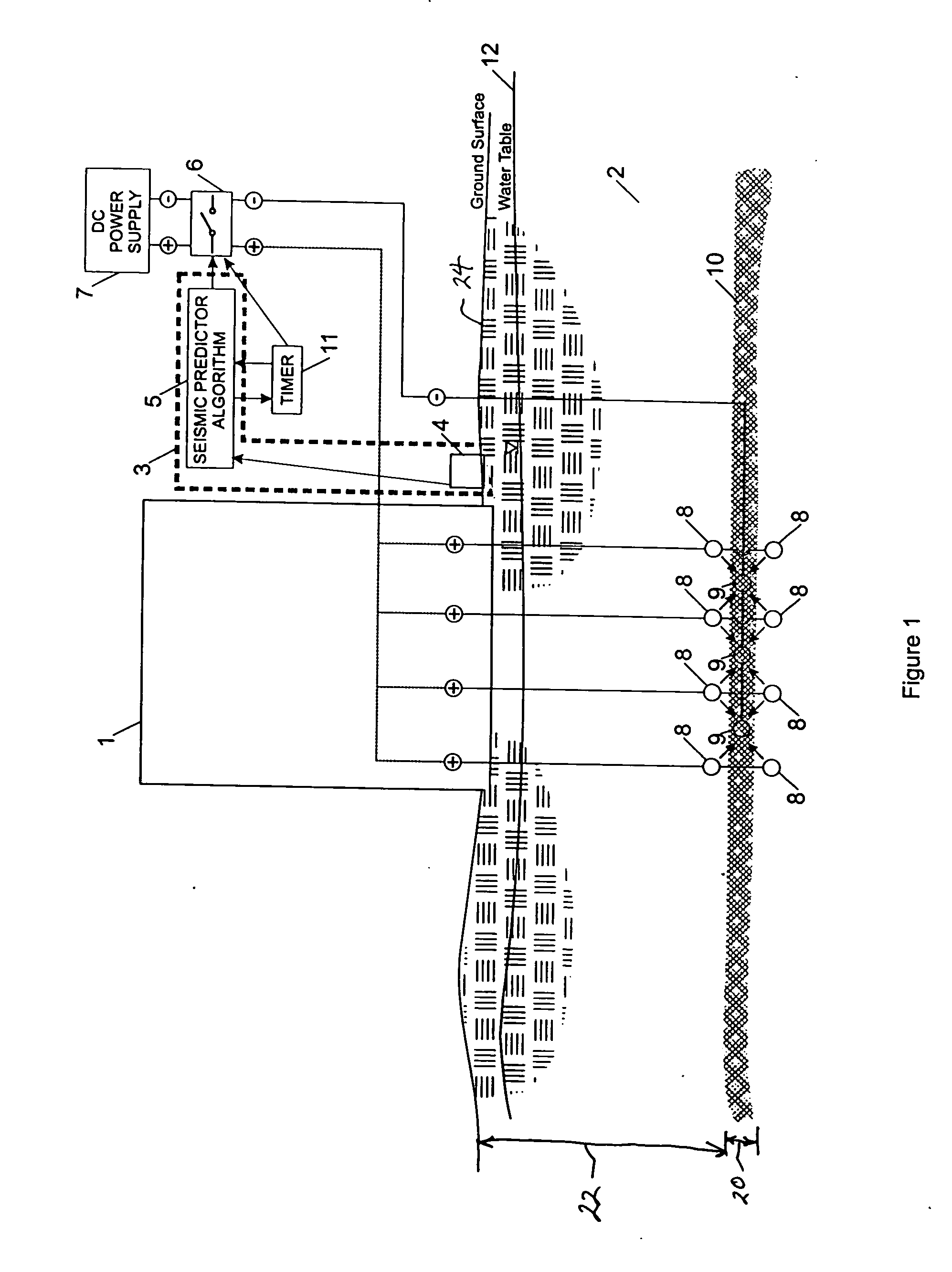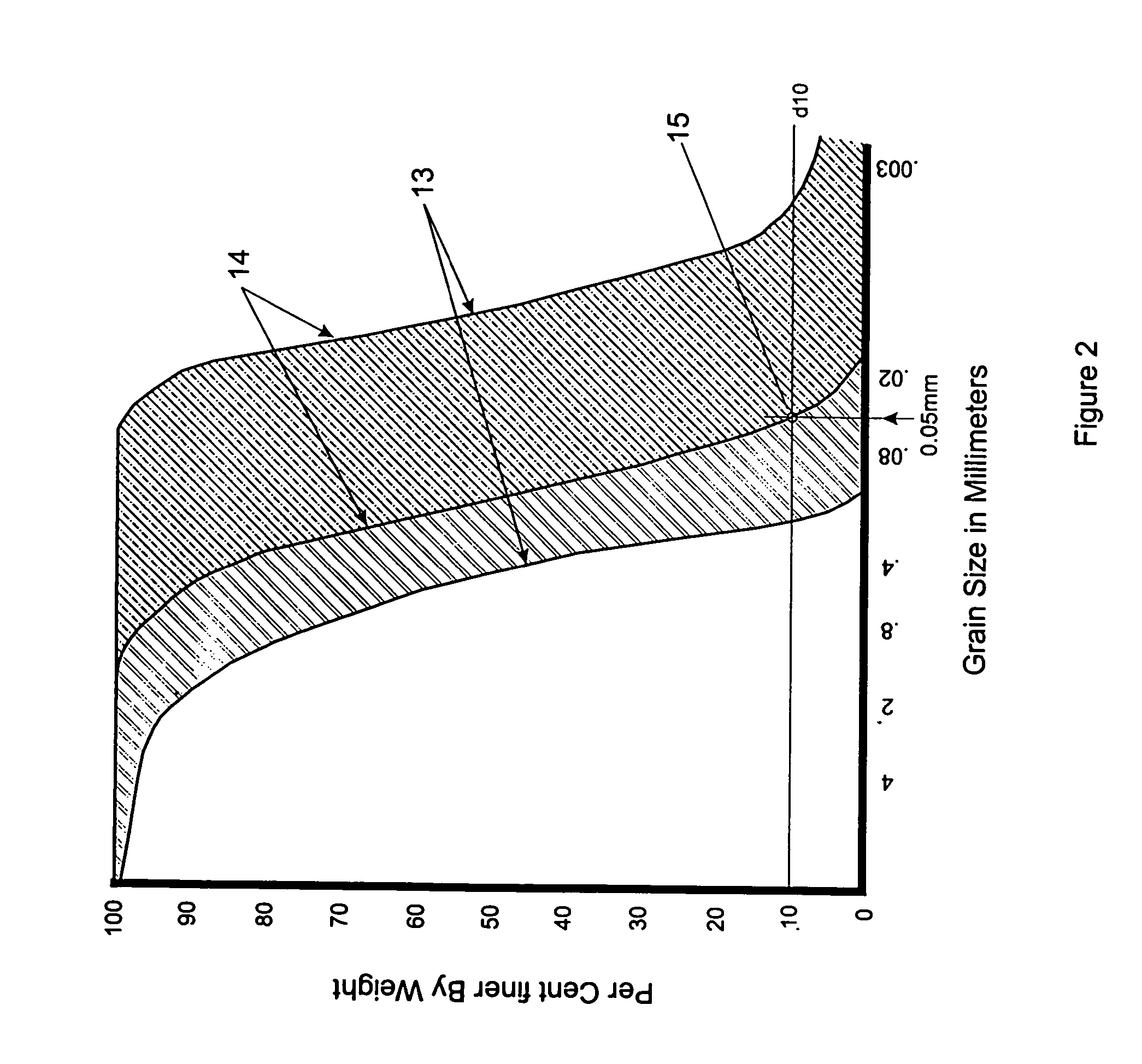Seismic base isolation by electro-osmosis
- Summary
- Abstract
- Description
- Claims
- Application Information
AI Technical Summary
Benefits of technology
Problems solved by technology
Method used
Image
Examples
Embodiment Construction
[0036] The present invention provides a method and system for seismically isolating a structure or works from earthquake induced ground motions. The method and system of the present invention employes a seismic monitor which activates a electro-osmosis system in the sub-surface saturated soils well beneath the structure. The electro-osmosis system raises the pore water pressure within a particular isolation layer of the soil horizon to ensure that soil horizon within that isolation layer liquefies during the earthquake event and thus isolates the overlying structure from the earthquake induced upward propagating shear wave ground motions. One form of the invention is illustrated in cross section in FIG. 1, with a structure 1 constructed on a saturated soil 2 which is prone to amplify earthquake induced ground motions. A seismically triggered switch 3 comprises an accelerometer 4 and predictor algorithm 5 running on a computer. The accelerometer 4 engages the ground surface 24 in ord...
PUM
 Login to View More
Login to View More Abstract
Description
Claims
Application Information
 Login to View More
Login to View More - R&D
- Intellectual Property
- Life Sciences
- Materials
- Tech Scout
- Unparalleled Data Quality
- Higher Quality Content
- 60% Fewer Hallucinations
Browse by: Latest US Patents, China's latest patents, Technical Efficacy Thesaurus, Application Domain, Technology Topic, Popular Technical Reports.
© 2025 PatSnap. All rights reserved.Legal|Privacy policy|Modern Slavery Act Transparency Statement|Sitemap|About US| Contact US: help@patsnap.com



